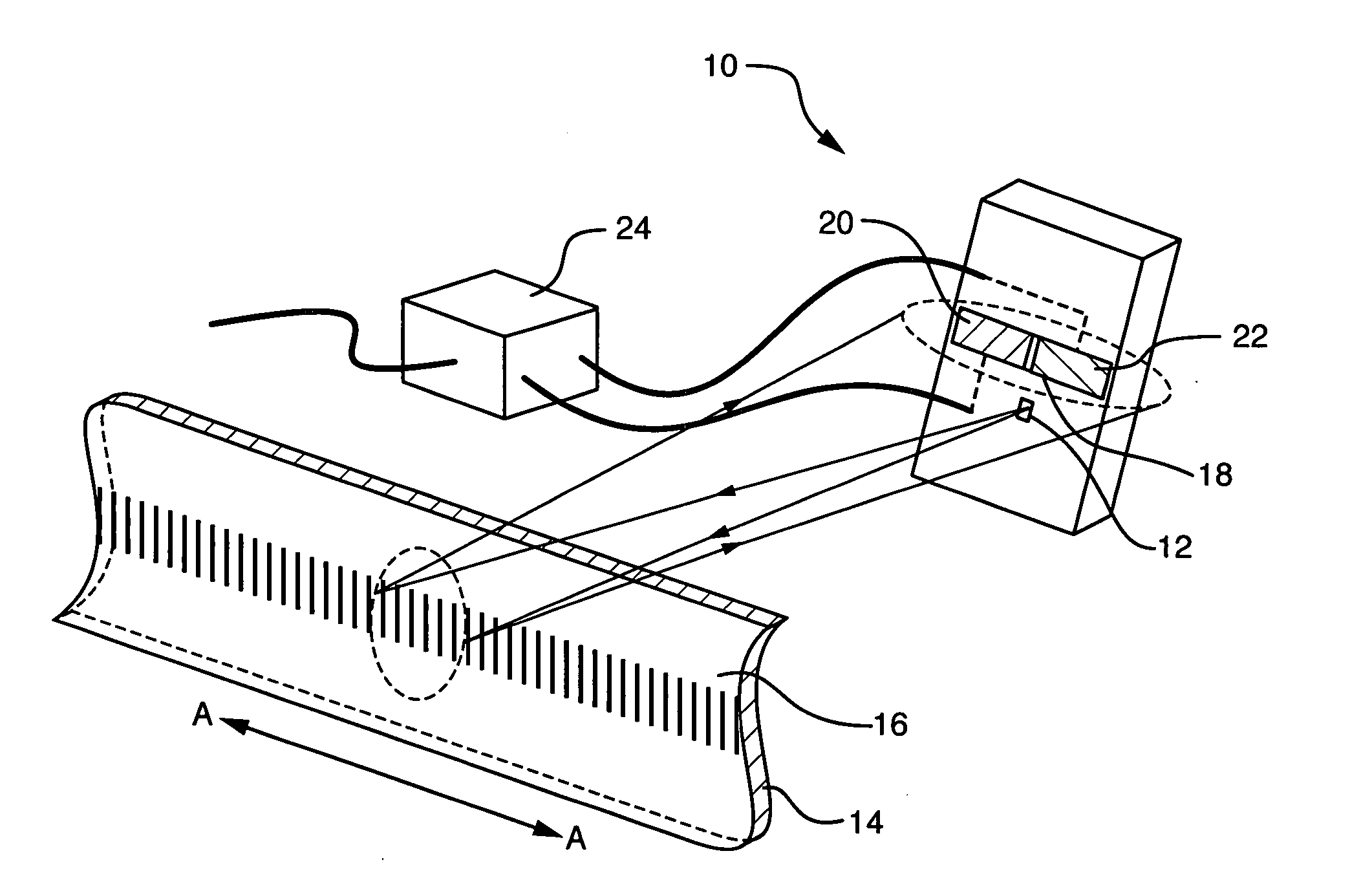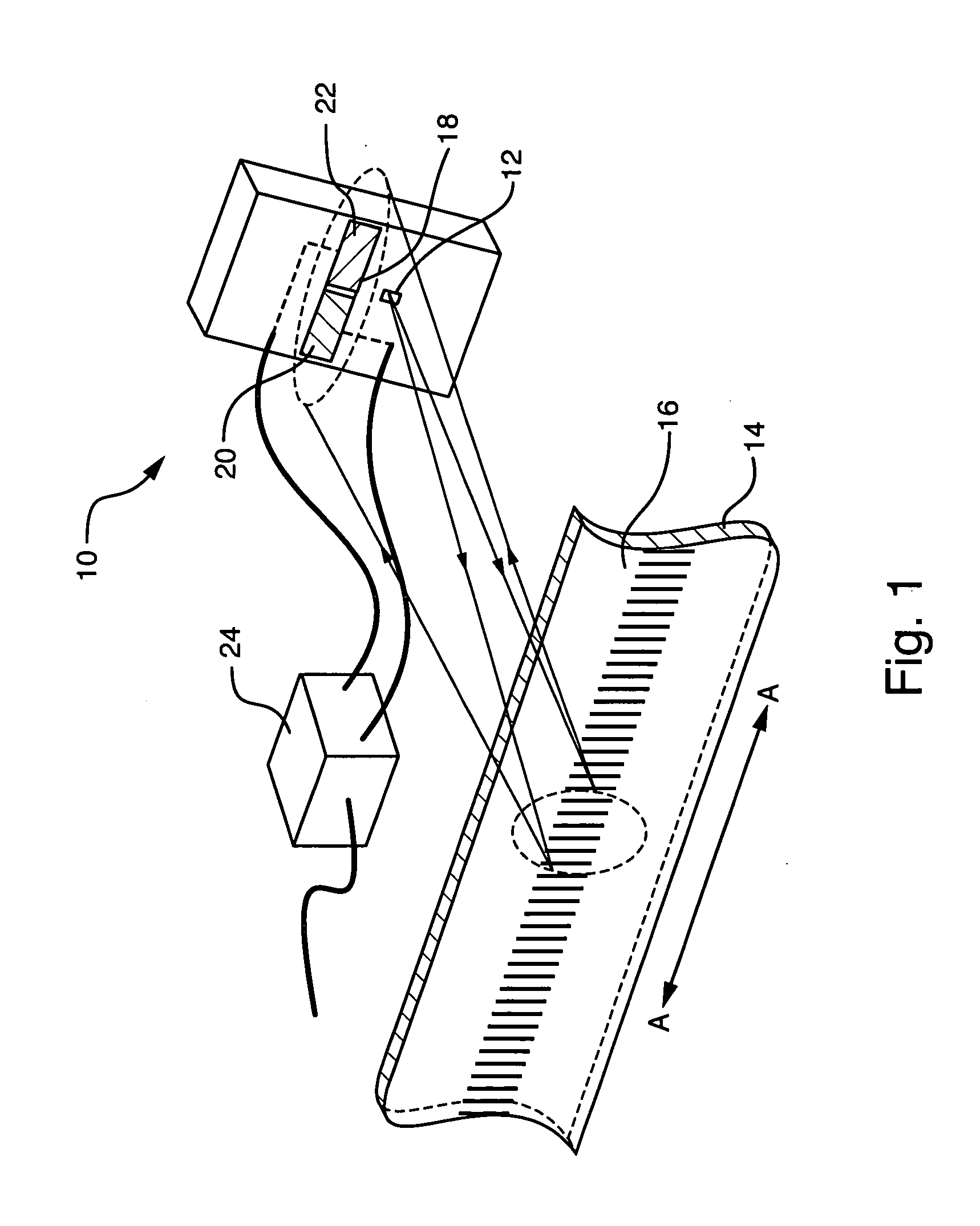Encoder scale error compensation employing comparison among multiple detectors
a technology of multiple detectors and encoders, applied in the field of position encoders, can solve the problems of affecting the accuracy of phase measurement performed by the encoder, the scale itself is ultimately limited by the perfection of the scale, and the encoder cannot capture errors that depend on the operating environment, etc., to achieve the effect of low cost and higher resolution
- Summary
- Abstract
- Description
- Claims
- Application Information
AI Technical Summary
Benefits of technology
Problems solved by technology
Method used
Image
Examples
Embodiment Construction
[0025] In FIG. 1, sensor apparatus 10 is installed as part of a reflective, diffractive optical encoder. A source 12 illuminates a scale 14 on which a periodic, reflective diffraction grating 16 has been created. Light from the source 12 is reflectively diffracted from the scale 14 toward the sensor apparatus 10, which in the illustrated embodiment includes an optical detector 18. The diffraction grating 16 generates multiple orders of diffracted light which interfere with each other to form an optical fringe pattern (not illustrated) on the detector 18.
[0026] The fringe pattern is ideally a sinusoid characterized by a period P. Conceptually, when the scale 14 moves laterally relative to the detector 18 along the direction indicated by double headed arrow A-A, the fringe pattern moves a proportional distance on the face of detector 18. An accurate measurement of the changes in the phase of the fringe pattern is a proportional measurement of the movement of the scale 14. As discusse...
PUM
 Login to View More
Login to View More Abstract
Description
Claims
Application Information
 Login to View More
Login to View More - R&D
- Intellectual Property
- Life Sciences
- Materials
- Tech Scout
- Unparalleled Data Quality
- Higher Quality Content
- 60% Fewer Hallucinations
Browse by: Latest US Patents, China's latest patents, Technical Efficacy Thesaurus, Application Domain, Technology Topic, Popular Technical Reports.
© 2025 PatSnap. All rights reserved.Legal|Privacy policy|Modern Slavery Act Transparency Statement|Sitemap|About US| Contact US: help@patsnap.com



